The Secession Museum is a true gem of Jugendstil design from fin-de-siècle Vienna. It’s famous for its exquisitely gilded Beethoven Frieze by Gustav Klimt.
This remarkable structure once served as the headquarters of the Secession Movement artists. They were a pioneering group that fearlessly embraced modernism and rebelled against the conservative world of academic art.
Designed by Joseph Maria Olbrich, one of the founders of the Secession movement, the Secession building was nothing short of shocking in its time. Indeed, it almost seems like an intentional in-your-face architectural response to the nearby Baroque-style Karlskirche.
In this Secession Museum guide, you’ll get an overview of the building’s architecture and a description of the wondrous Beethoven frieze.
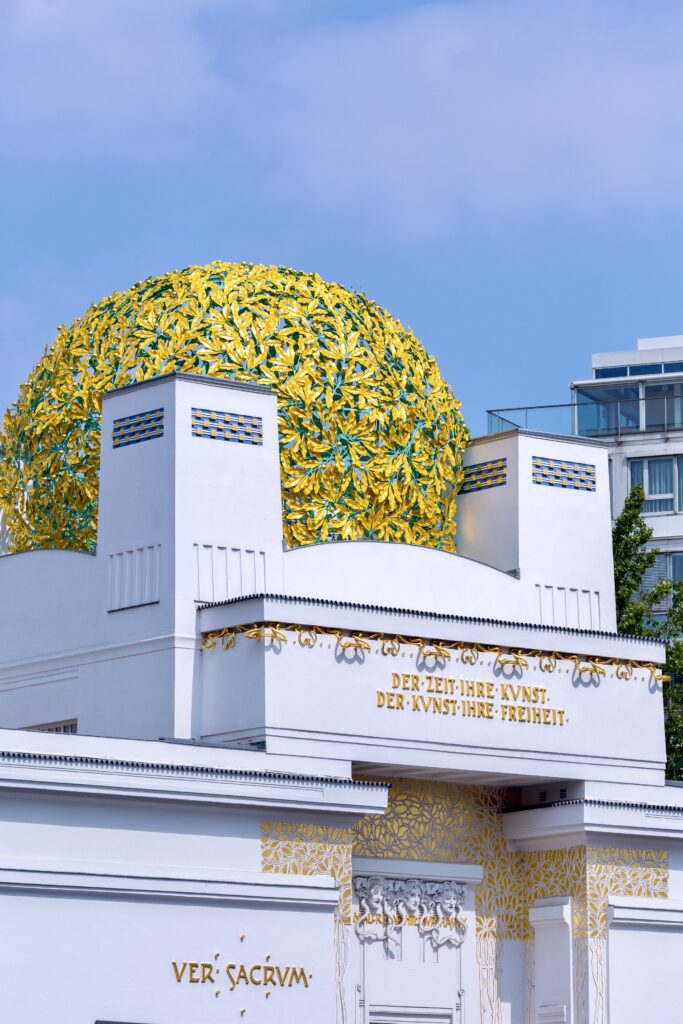
The Architecture
In designing the building, Olbrich ignored the prevailing Baroque ornamentation style. Instead, he embraced the Secessionist ideals of purity, geometry, and abstraction.
The building’s facade is gleaming white stucco. The walls are mostly blank, making it look like a white cube. There are no columns, not even any windows on the facade. It seems like a rather chaste temple or a secretive meeting place for a cult.
The only decoration is the golden orb on top, Koloman Moser’s sculpted owls, and a floral motif above the entrance. The orb was centered on four pylons and its laurel leaves were meant to symbolize victory, dignity and purity.
The Secessionist’s motto was “To every age its art. To every art its freedom.” And those words are inscribed on the building itself.
When it was unveiled, the Secession building was roundly derided. It was called a “mausoleum” and its gold dome a “cabbage.” Now, it’s a beloved landmark.
READ: Guide To the Vienna Secession
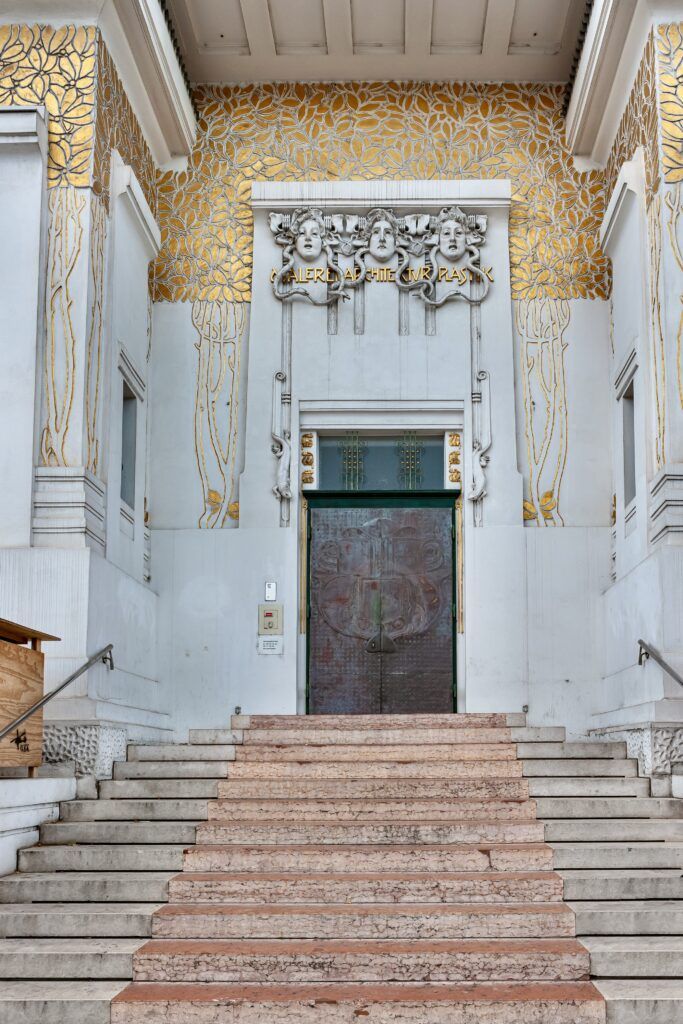
The Secession Museum’s Beethoven Frieze
Today, the building serves as an exhibition hall and museum. It houses one of Vienna’s most treasured gems: Gustav Klimt’s Beethoven Frieze.
It’s housed in a specially designed gallery in the climate controlled basement. This artwork alone justifies the admission fee.
The museum also hosts temporary exhibitions of contemporary art. Personally, I found the current exhibition uninspiring, so I focused my attention on the Klimt masterpiece.
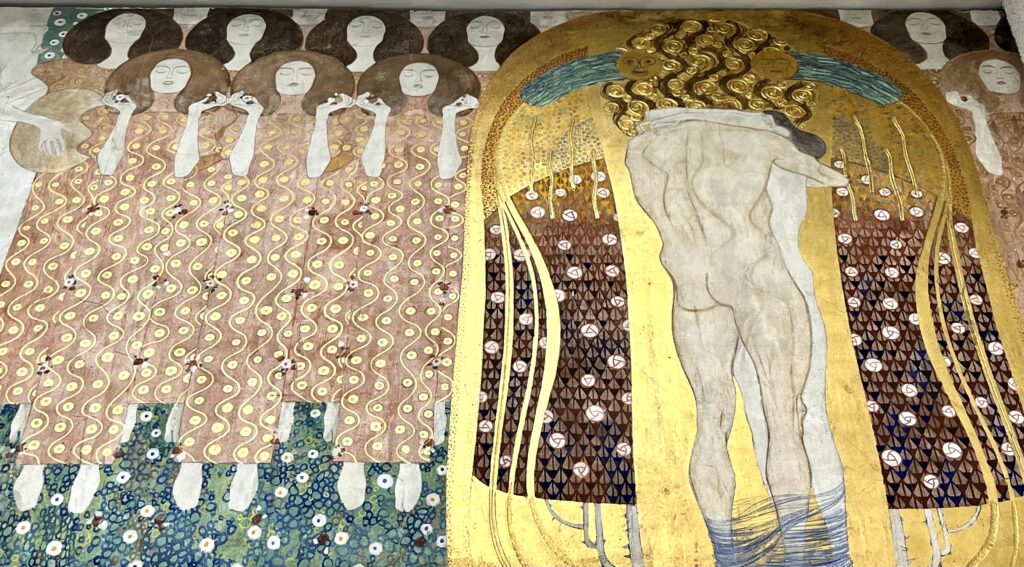
The Beethoven Exhibition
The frieze was originally created for the 14th Secessionist exhibition in 1902, where Beethoven was the central theme. The composer was considered the archetypal misunderstood and alienated genius, a sentiment that deeply resonated with the Secessionist artists.
The collaborative exhibition involved 21 artists, designers, and architects. They all worked together to craft a “total work of art” centered around Max Klinger’s monumental sculpture of Beethoven (now located in Leipzig).
Before reaching the frieze, you’ll pass through an antechamber that provides a concise history of the Secession movement.
Klimt’s frieze is an impressive piece, measuring 112 feet in length, 7 feet in height, and weighing 4 tons. It’s installed near the ceiling, so you’ll need to crane your neck to admire it.
The frieze consists of symbolic scenes inspired by Beethoven’s 9th symphony. It’s one of the most renowned examples of Jugendstil or Art Nouveau.
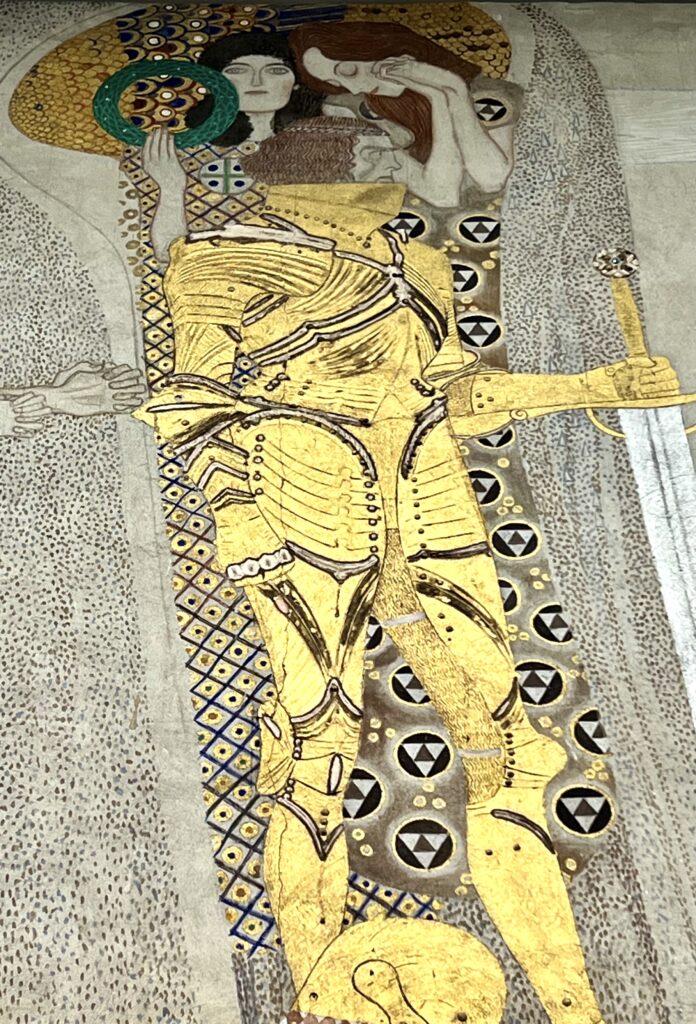
Interpretation Of The Beethoven Frieze
The frieze is intended as an allegory of humanity’s desire for happiness and its salvation through art. It narrates the tale of a valiant knight embarking on a quest to rescue a distressed lady.
Along the way, the hero faces daunting challenges and confronts menacing creatures, including the towering Typhoeus monster from Greek mythology. Nevertheless, he persists in his mission.
The frieze starts on the long wall with female figures dressed in flowing white gowns that appear to glide gracefully. These “genies” symbolize longing.

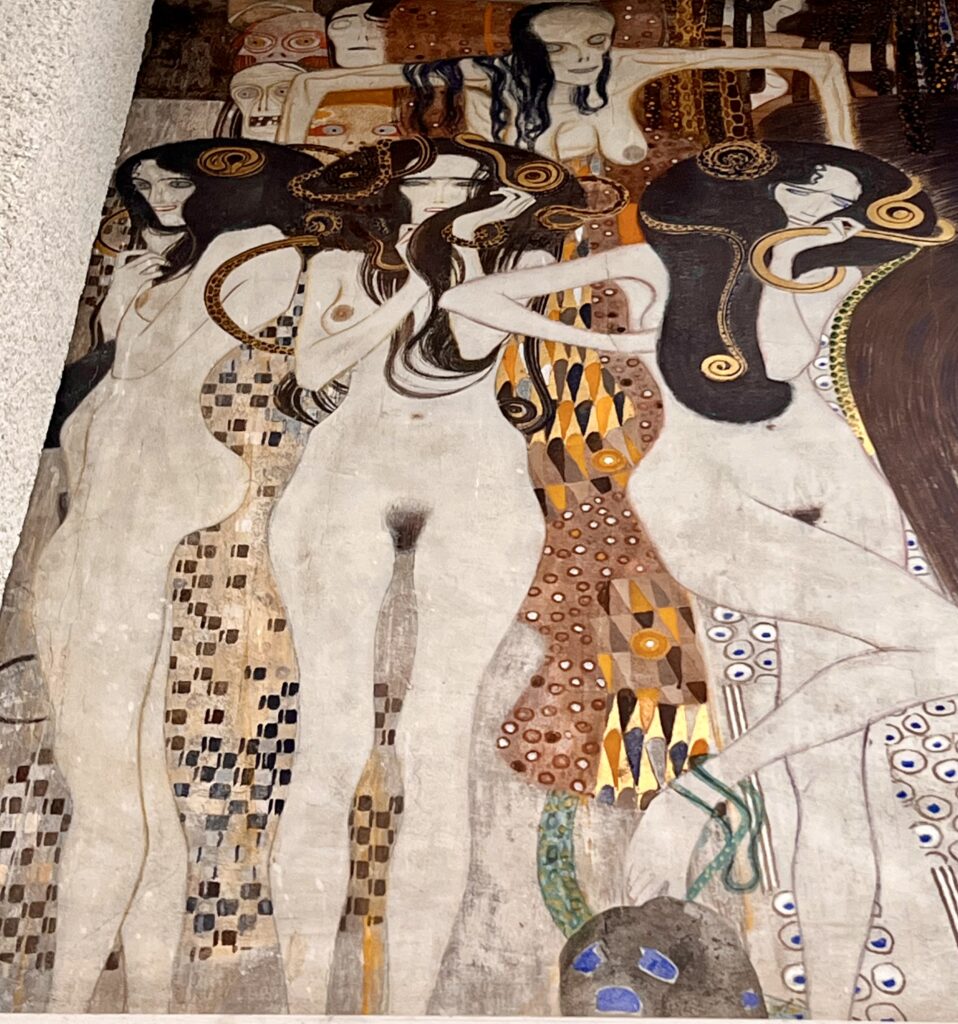
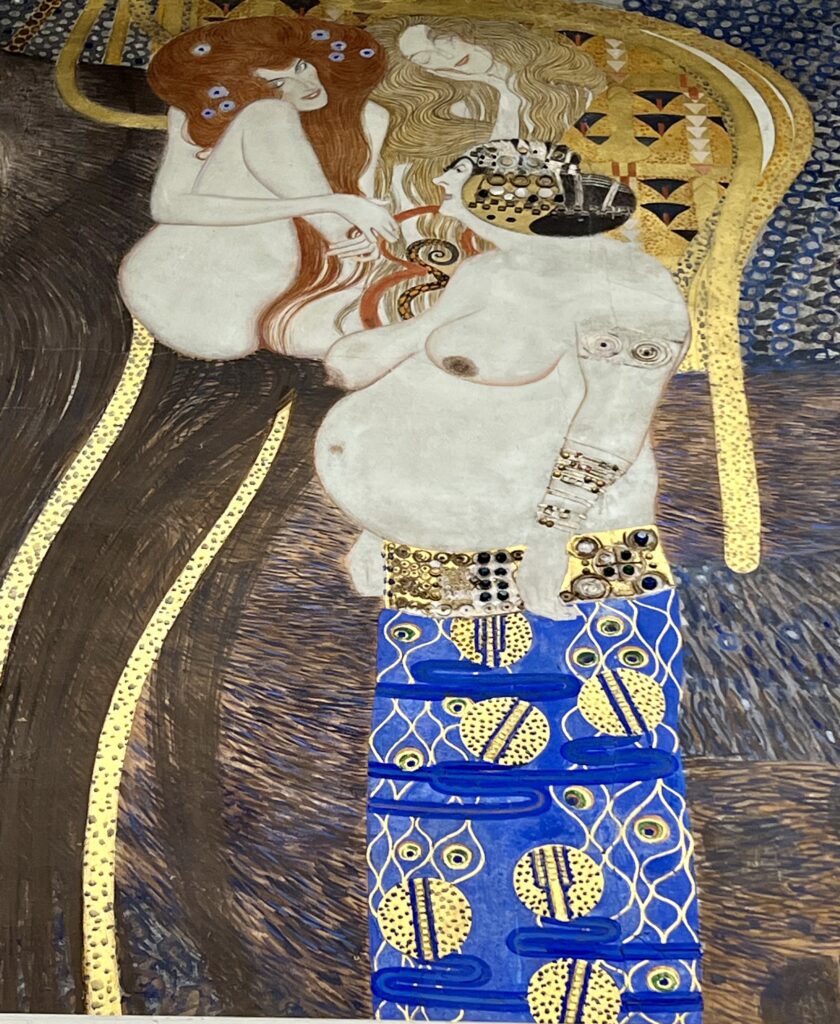
Moving ahead, you’ll encounter three nude figures earnestly pleading with a knight adorned in magnificent golden armor. Above him, two figures represent ambition and compassion, urging the knight to become a savior.
The next wall portrays the knight’s battle against the forces of darkness and evil. His challenges include defeating a bloodthirsty gorilla and resisting the tempting allure of three gorgons, whose hair is laced with serpents.
Above the gorgons, you’ll find mocking figures personifying sickness, madness, and death. The figure of death is particularly creepy.
To the right, above the gorilla, there are figures symbolizing lasciviousness, wantonness, and intemperance.
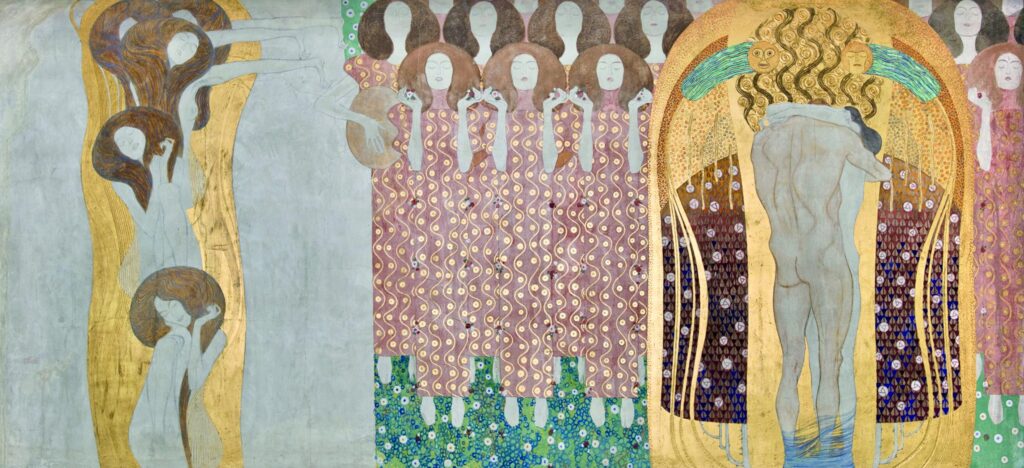
On the last wall, salvation unfolds, overcoming all the evil.
A golden figure plays a harp, reminiscent of Ancient Greek artistry. The genies, introduced in the first frame, reappear with enraptured expressions against a field of gold. A chorus of women echoes Beethoven’s “Ode To Joy.”
The poem’s penultimate line, “a kiss to the whole world,” finds visual resonance in the final section of the frieze — a couple locked in a kiss and enveloped in a gold cocoon.
The kiss evokes the grand crescendo of Beethoven’s symphony. It will also no doubt remind you of Klimt’s most renowned painting, The Kiss, housed at the Belvedere Palace.
This frieze is part of Klimt’s illustrious “gold period.” It’s embellished with intricate patterns, gold hues, and mother-of-pearl inlays.
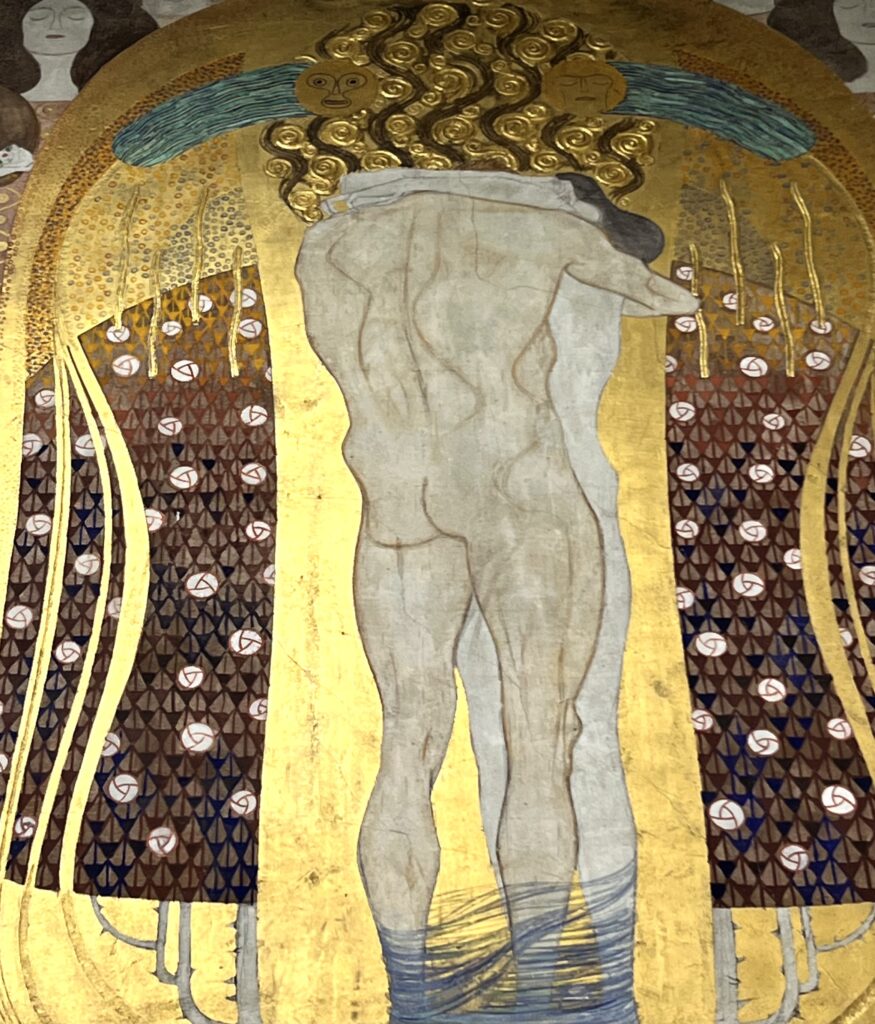
It creates a dreamlike and sensual atmosphere. As you admire the frieze, you can don headphones and listen to Wagner’s interpretation of Beethoven’s 9th symphony.
Klimt’s frieze was intended to be temporary and was made with ephemeral materials. But a patron of the movement removed it and put it in storage.
In 1973, the Austrian government purchased the frieze from the Lederer family. It was painstakingly restored in the 1980s and unveiled in 1986.
>>> Click here to book a guided tour of Klimt’s art that includes entry to the Secession Museum
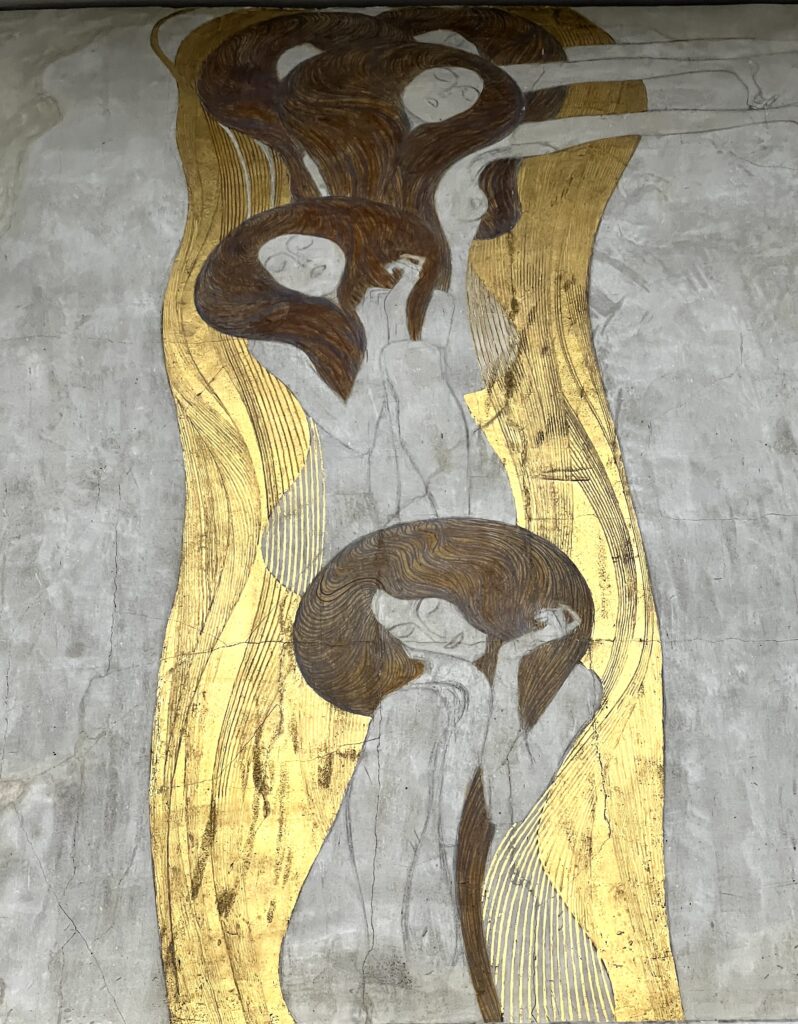
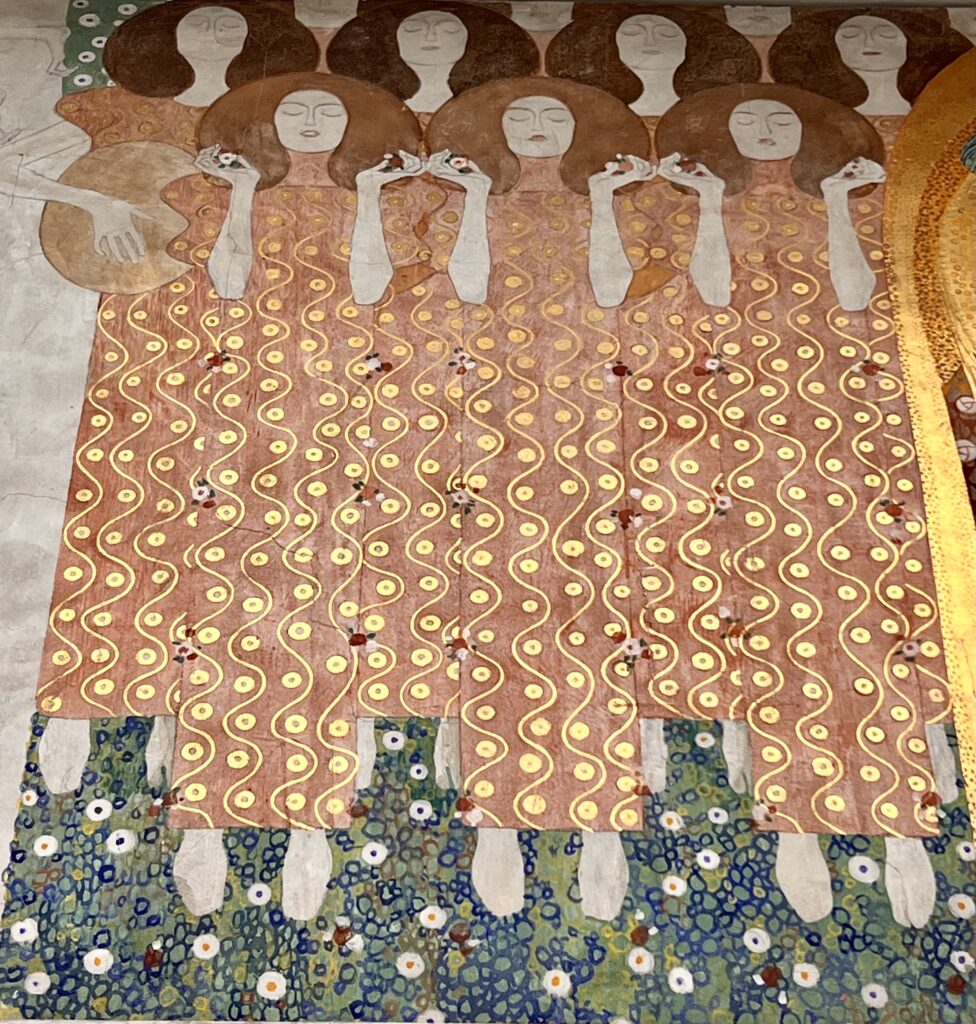
Practical Information For Visiting The Secession Museum
Address: Friedrichstraße 12, 1010 Wien, Austria. The U 1, U2, and U4 metro lines all stop at Karlsplatz Station.
Hours: Open Tuesday through Sunday from 10:00 am to 6:00 pm. Closed Monday
Ticket Price: 12 euros. The audio guide is 3 euros.
Is the Secession Museum Worth Visiting?
If you are a fan of Klimt, the Secession museum a must visit. If you are not a fan of Klimt, it may not be worth the rather high price of admission.
I had read the Secession was not on the typical tourist track. But that has not been my experience when visiting. On my last visit, it was mid-October and the museum was plenty crowded.
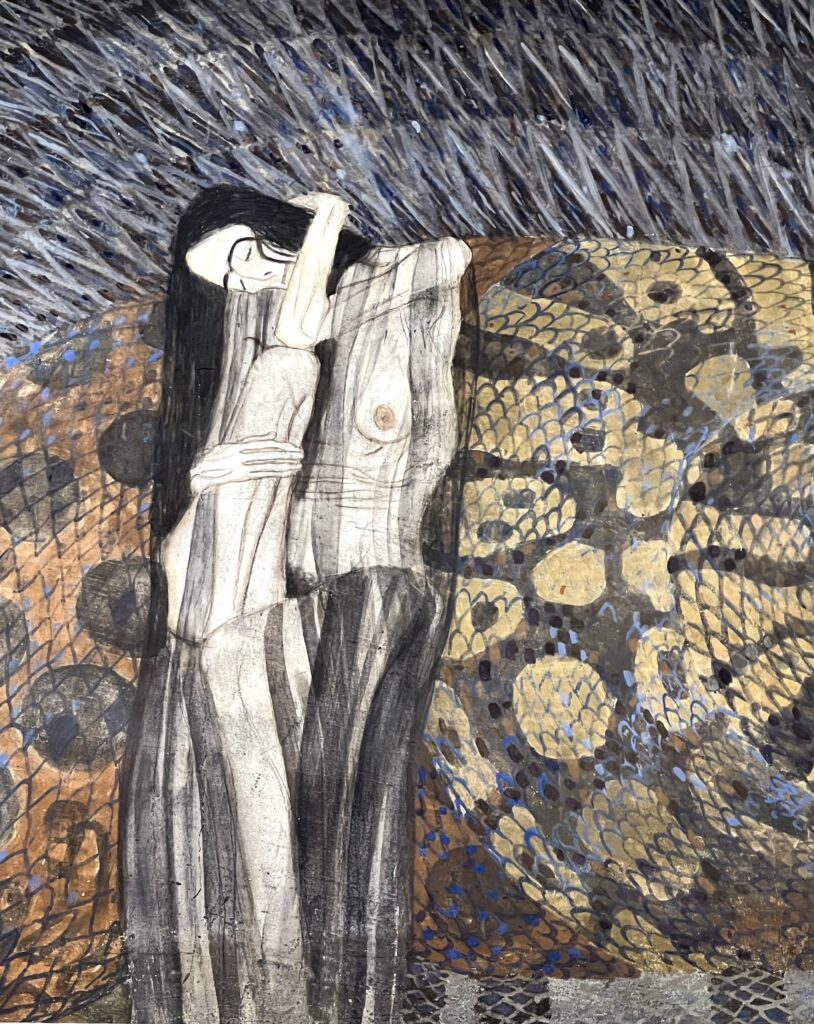
Pro Tip: There is a small sign that indicates you can’t take photos. But this is not enforced. Everyone there was taking photos with the docent watching.
Nearby Cafes: The Secession is near the Cafe Museum, designed by Art Nouveau architect Alfred Loos. It’s also near the Naschmarkt, which is full of eateries.
I hope you’ve enjoyed my guide to visiting the Secession Museum in Vienna. You may find these other Vienna travel guides and resources useful:
- 3 days in Vienna itinerary
- guide to the Belvedere Palace
- guide to Klimt paintings in Vienna
- guide to the Beethoven trail in Vienna
- what to do in Vienna in winter
- best museums in Vienna
- guide to the Sisi Museum
- guide to the Kunsthistoriches
- guide to the Vienna Secession
- guide to the Albertina Museum
- guide to the Freud Museum
If you want to visit the Secession Museum, pin it for later.

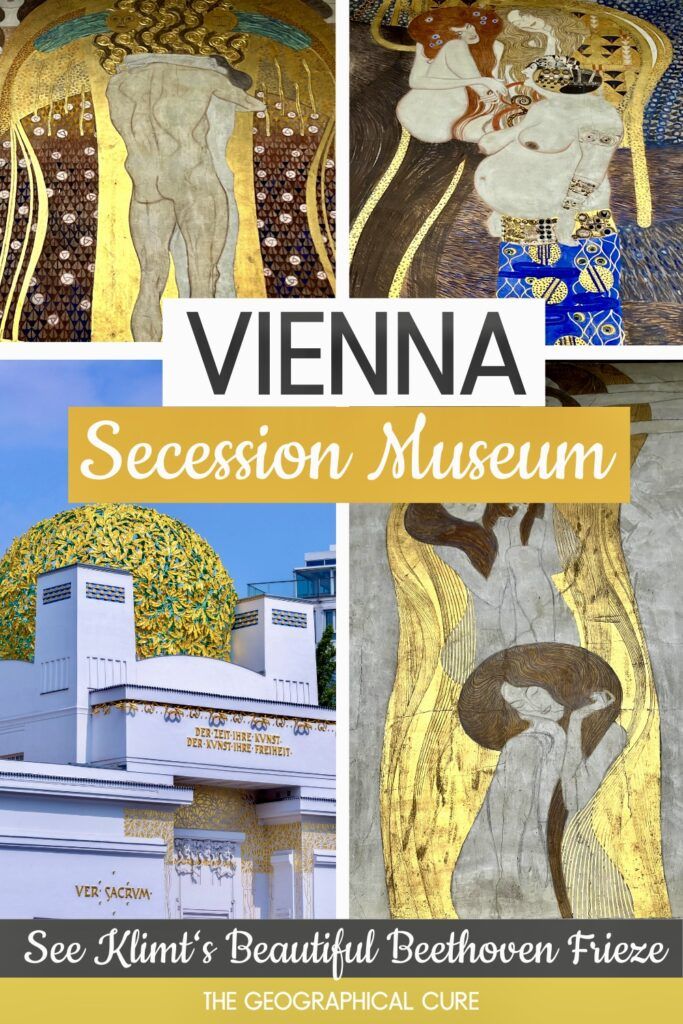
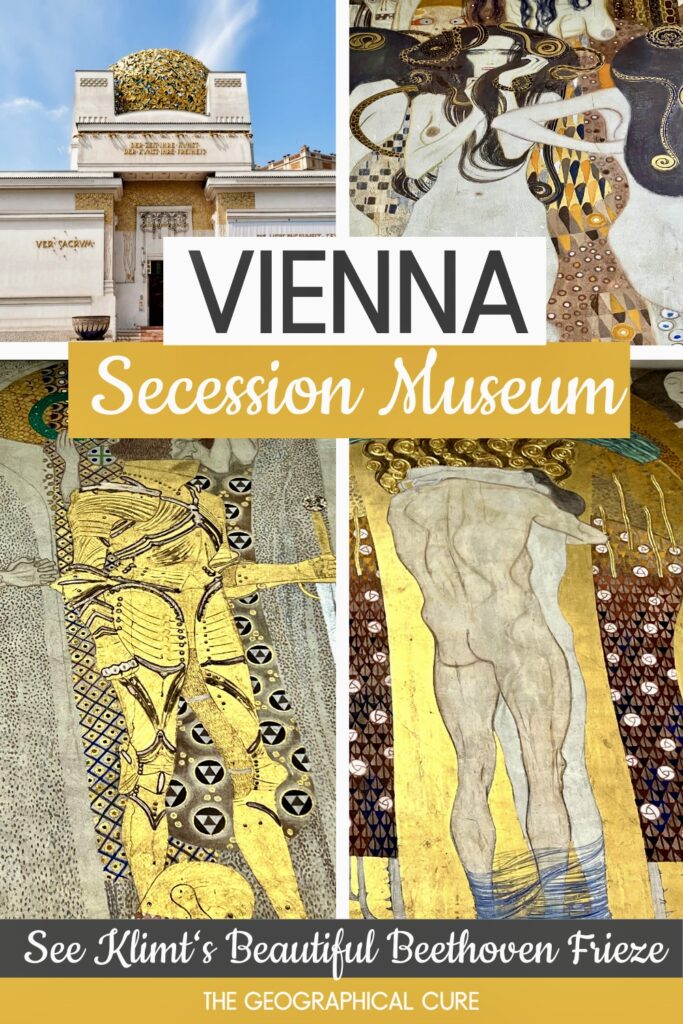
Could you tell me who is playing Beethoven
It was the Vienna Symphony, the Weiner Symponiker.